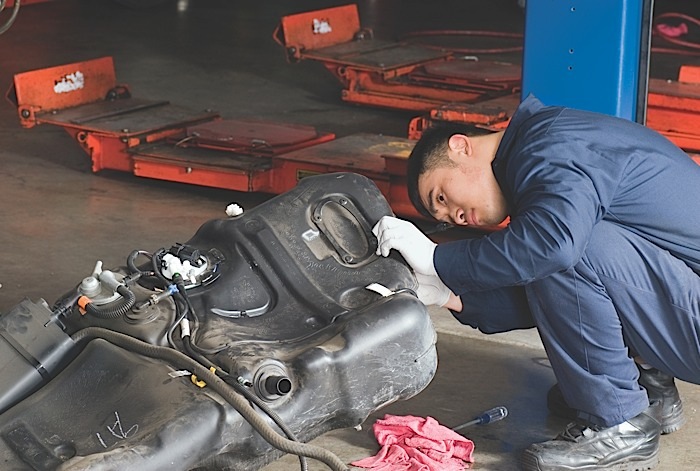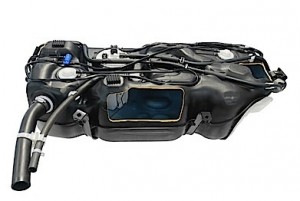Nothing is worse than a comeback after a fuel tank has been dropped. Discovering that the fuel tank needs to be dropped again to address a problem can kill shop productivity and profitability. Below are tips that can help you avoid comebacks and dropping the fuel tank for a second time.
Check the Entire EVAP System: It takes at least one drive cycle for most vehicles to set an EVAP code. A leak due to disturbing the lines may not set a code during the initial test drive. The code may come on after the vehicle has been sitting for a while or a certain temperature has been reached. Some vehicles allow the integrity to be checked with a scan tool using bi-directional tests.
Follow the Smoke: A smoke machine can be a great “quality control” tool to make sure the fuel tank and EVAP system are sealed after a fuel tank has been dropped. Fuel filler necks are especially susceptible to leaks if the fuel tank has been dropped. A smoke machine is a worthwhile investment for diagnosing automotive leaks.
Check the Filler Neck: Some fuel filler necks can be prone to corrosion. Over time, corrosive de-icers and road debris can destroy the protective coating on the pipes. Aftermarket fuel filler necks are available for popular models that have corrosion problems. If a filler neck is corroded, it is also a safety issue.
Noisy Fuel Pump: Post fuel pump or fuel tank replacement noise can occur if the Radio Frequency Interference (RFI) filter was not installed or not included with the new pump. The filters are typically a cylindrical piece of iron that encases a section of the power wires. The customer may notice a buzz coming from the radio when running and/or when the key is moved from the accessory to run. The RFI filter needs to be near the pump for maximum effectiveness, so you might have to lower the fuel tank to install a new filter.
Bad grounds: Check the connector for any signs of thermal damage that may indicate there was a voltage drop or a circuit with high resistance. Do not assume the old pump caused the thermal damage. Bad grounds and circuits will stay with the vehicle and damage the new pump.
Tank Top: In the Rust Belt states, corrosion on the top of the fuel tanks and on the fuel lines is starting to become a big headache during fuel pump replacement. This is due to brines being used on roads to prevent icing. Brines stick to vehicles — even the tops of fuel tanks — long after the snowstorms have passed and even into summer. Then, every time it rains, the brines are reactivated and start to corrode the fuel tank. It’s a good practice to inspect the fuel lines for corrosion before starting the job. Few things are worse than having to call the customer because a line collapsed due to corrosion during removal or installation.















